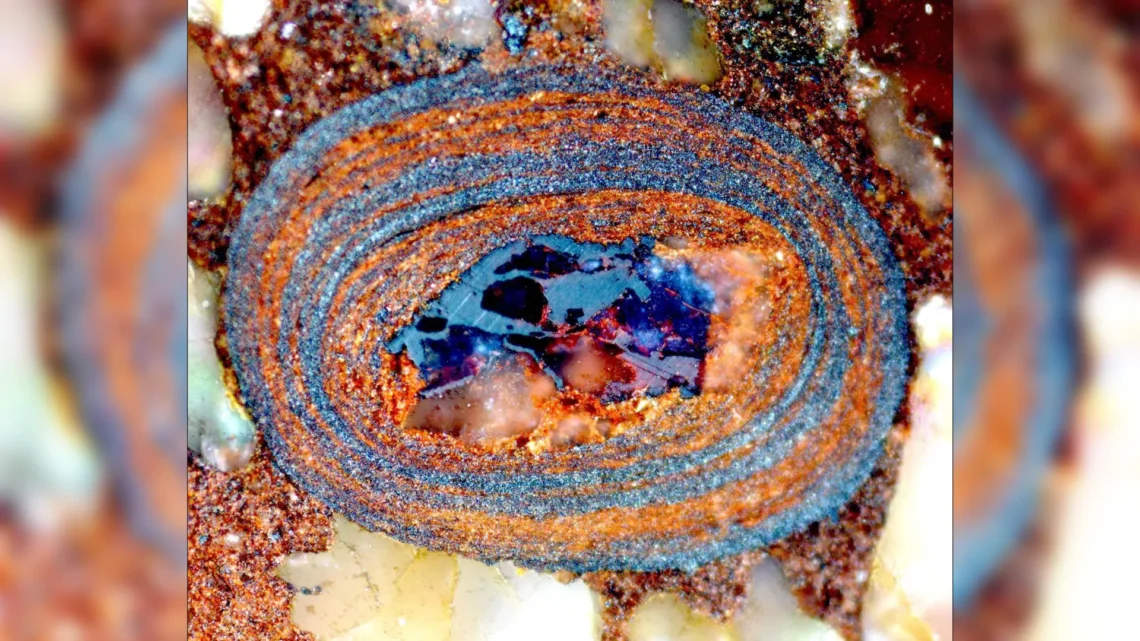Earth scientists often encounter significant hurdles when exploring the planet’s history. Many crucial events occurred so long ago that direct evidence is scarce. Because of this, researchers frequently depend on indirect hints or computer simulations. However, a team led by ETH Professor Jordon Hemingway has discovered a unique natural witness to this era: tiny, egg-shaped iron oxide stones that can directly measure carbon reserves in the ancient ocean.
These stones, known as ooids, might look like grains of sand at first glance, but in terms of their formation, they’re more akin to rolling snowballs. They accumulate layers of material as they are pushed across the sea floor by waves. During this process, organic carbon molecules cling to them and become a part of their crystal structure.
By examining these impurities, Hemingway’s team has successfully retraced the supply of organic carbon in the sea—dating back to as far as 1.65 billion years. Their findings, published in the journal Nature, reveal that between 1,000 and 541 million years ago, carbon reserves were significantly lower than previously thought. This challenges long-held explanations about major geochemical and biological events of that time and sheds new light on Earth’s history.
The Ocean as a Reservoir of Life’s Building Blocks
So, how does carbon end up in the oceans? On one hand, carbon dioxide (CO2) dissolves from the air into seawater. This CO2 is then transported to greater depths by mixing processes and ocean currents, where it is retained for extended periods. On the other hand, organic carbon is produced by photosynthetic organisms like phytoplankton or certain bacteria. These microscopic life forms use sunlight and CO2 to create organic carbon compounds. When they die, they slowly sink to the ocean floor as marine snow. If this organic matter avoids being consumed by other organisms, the carbon is stored in the sea bed for millions of years.
Phytoplankton aren’t the only contributors to carbon supply; microorganisms also recycle carbon constituents by decomposing waste and deceased organisms, releasing building blocks back into the ecosystem. This results in what is referred to as dissolved organic carbon, which freely drifts through the ocean—a vast reservoir containing 200 times more carbon than is actually found in marine life.
The Oxygen Revolution Changed Everything
Researchers once believed, based on anomalies in ocean sedimentary rocks, that this reservoir of building blocks peaked between 1,000 and 541 million years ago. This assumption underpinned explanations of how ice ages and complex life evolved simultaneously. Photosynthetic organisms’ production of life’s building blocks was closely tied to the evolution of the atmosphere and the emergence of more complex organisms. Photosynthesis was crucial for oxygen accumulation in the atmosphere.
In two major waves known as the “oxygen catastrophes,” the oxygen level rose to today’s 21 percent. Both instances coincided with extreme ice ages that blanketed the planet in glaciers. Despite these harsh conditions, organisms continued to evolve. During the first oxygen catastrophe, which occurred 2.4 to 2.1 billion years ago, organisms developed a metabolism that used oxygen to convert food into energy. This highly efficient energy production enabled the rise of more complex life forms.
Carbon Content Much Lower Than Assumed
Hemingway’s team is examining the complex relationships between geological and biological changes. They created a new method to directly determine the size of marine building block reserves during specific timeframes, using carbon particles in ooids as their guide.
“Our results contradict all previous assumptions,” Hemingway stated. According to the ETH researchers’ measurements, between 1,000 and 541 million years ago, the oceans contained 90 to 99 percent less dissolved organic carbon than previously assumed. It wasn’t until after the second oxygen catastrophe that levels rose to the current 660 billion tonnes of carbon.
Lead author Nir Galili emphasized the need for new explanations regarding the relationships among ice ages, complex life, and increasing oxygen levels. He suggested that the dramatic reduction of the carbon reservoir was likely due to the emergence of larger organisms during that period. As single-celled and early multicellular organisms sank more rapidly after they died, marine snowfall increased. However, carbon particles weren’t recycled in deeper ocean layers due to low oxygen levels, leading to their accumulation on the sea floor and a sharp decline in the dissolved organic carbon reservoir. Only when oxygen levels increased in the deep sea did the carbon reservoir return to its current size.
From the Primordial Ocean to the Present Day
Though the periods studied are long past, the research findings are crucial for our future. They reshape our understanding of how life on Earth—and potentially other planets—has evolved. Additionally, they provide insight into how the Earth responds to disturbances. Given that human activities are currently warming and polluting the oceans, which leads to lowered marine oxygen levels, the events described could potentially recur in the distant future.
Summary: A research team led by ETH Professor Jordon Hemingway has discovered tiny iron oxide stones, or ooids, that help measure ancient oceanic carbon reserves, revealing they were 90-99% lower than previously thought between 1,000 and 541 million years ago. This challenges established theories about Earth’s geochemical and biological evolution, highlighting the critical role of oxygen and carbon dynamics in shaping life on Earth.





